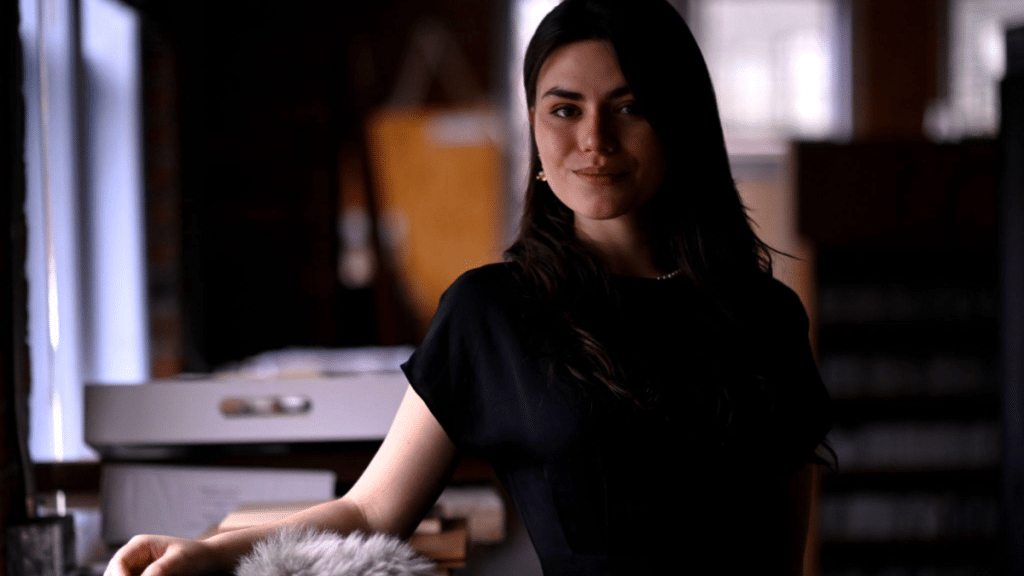Alessandra Clemente is an architectural interior designer known for her distinct approach to her craft. By blending creativity with technical expertise in a way that feels deeply personal, her work embodies the idea that architecture goes beyond designing buildings; it is about creating spaces that speak to the people who inhabit them, spaces that adapt to the needs, desires, and emotions of those who live within them. From her unique design philosophy to her influence from personal experiences, Clemente’s approach to architecture is one that is as much about artistry as it is about problem-solving.
Balancing Artistry with Functionality
Clemente views architecture as a balance between artistic expression and technical rigor. Interior architecture allows her to explore this dynamic tension, creating with the freedom of an artist without losing precision and functionality. In the early stages of a project, Clemente often leans heavily on the artistic side, crafting concepts that are free from the constraints of structural demands. This initial phase is where she allows her creativity to flow, unconstrained by the physical boundaries of construction, and as the project progresses, the more methodical aspects come to the forefront, and this is where her technical expertise shines. The ability to balance the unpredictable aspects of design with the precision required for physical realization is one of the hallmarks of her process.
Currently at Olson Kundig, the internationally regarded Seattle-based architecture and interiors firm, Alessandra Clemente has emerged as a designer to watch. Known for her thoughtful, layered approach to space, Clemente has contributed to a series of high-profile projects that quietly shape how institutions and individuals experience the built environment. Her work spans the globe—from collaborating with renowned six-star luxury resort groups, to designing corporate offices for high-profile clients. During her tenure at Calvert Wright Architecture, she played a key role in the design of the Cooperman Library renovation at the City University of New York (CUNY). This project reimagines the student experience through light, openness, and architectural clarity. She brings a similar sensitivity to her work in museum and gallery environments, including immersive spaces for local cultural staples, where discretion and spatial storytelling are paramount.
Learning from Life
Clemente’s educational journey is far from traditional. While she trained at Pratt Institute and worked under the mentorship of Calvert Wright, she views her “educational background” as an ever-evolving compilation of experiences shaped by the people, places, and encounters she has had throughout her life. For Clemente, design is a multidisciplinary field that extends beyond formal training into the daily moments of life. Her creative growth is not just about architecture but about absorbing lessons from seemingly unrelated sources: how a chair feels when you sit in it, the font on a book cover, the way a space feels when you move through it. This broad, life-encompassing view of education allows her to approach each project with a fresh perspective, free of preconceived ideas about what a space “should” be.
Her most significant influence, however, is personal: her mother, a passionate collector, painter, and decorator. Growing up in a home filled with art, antiques, and sculptures, Clemente was exposed to a wide range of design styles and ideas. This eclectic environment sparked her curiosity and creativity, teaching her about balance, curating different styles, and the beauty of imperfection. These lessons remain a cornerstone of her design philosophy to this day. Through her mother’s passions, Clemente learned to appreciate the harmony that can be found in asymmetry and the value of history in design.
Empathy at the Heart of Design
What truly sets Clemente apart is her deep empathy for the people she designs for. She believes that spaces are only meaningful when they reflect the needs and desires of those who inhabit them. One of her favorite aspects of the design process is the positive impact her work can have on people’s lives. For her, the joy of creating a space where someone can sleep soundly, feel connected to others, or simply feel comfortable is unparalleled. This approach is central to her work, whether she is designing a home, a public library, or an educational institution.
Clemente’s time at Calvert Wright Architecture solidified her commitment to community-based design and historical preservation. There, she worked on projects that considered the needs of the community, such as branch proposals for the Brooklyn Public Library, as well as playing a key role in the master-planning feasibility study for the historic Thomas Hunter Hall. These projects helped her understand that design goes deeper than simply being aesthetically pleasing and can drastically improve the quality of life for the people who use the space.
Alessandra Clemente’s work is a great example of how architecture is not just a business but an art. Her ability to blend art with technical expertise and her empathy for the people she designs for, give her field a refreshing perspective. As she continues to evolve as a designer, Clemente’s passion for creating spaces that are meaningful and adaptive to the needs of their users is a direction we would like to see more in the field. In the current highly competitive mass production-based economy, clients have paid the price, and examples like this shed some light on what modern consumers want when investing in a good or service.
